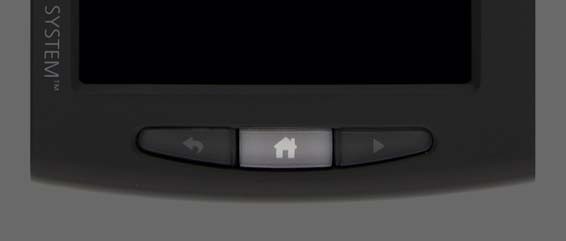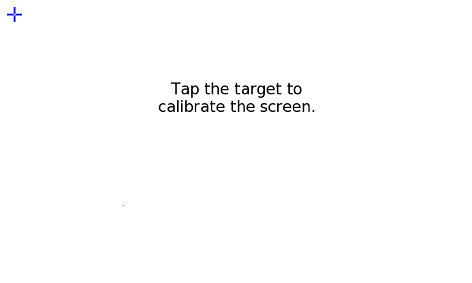This information pertains to LabQuest 2.
If you have an original LabQuest, see this article.
If you have a LabQuest 3, see this article.
Symptoms of a LabQuest screen that is out of calibration
- The screen is not responsive to taps.
- The screen is acting as if you had tapped the wrong location.
To perform a screen calibration
a. Press and hold the plastic Home button (not the button on screen) for 5 seconds to display the calibration tool.

b. Tap the center of the calibration target in the upper-left corner of the screen.

c. After the screen registers the tap, the target will move to a new location.
d. Tap center of the target in its new location. Repeat with each new target location until you have tapped all five calibration locations (once in each corner and once in the center of the screen).
Tips for a more accurate calibration
- Tap the exact center of the target using the included stylus.
- Avoid touching the screen in more than one place (such as dragging your pinky finger) while calibrating.
A good test to see if the screen is well-calibrated is to open the periodic table application (tap Periodic Table from the Home menu). As you tap each element, you should see the details for that element. If tapping an element brings up properties for an adjacent element, then the screen is not registering the correct coordinates of each tap and may need to be recalibrated as described above.
Contact Vernier for additional technical support if either of the following issues occur:
- The calibration tool does not come up after holding the Home key for five seconds.
- After tapping one of the targets, the target does not move to the next location.
If problems continue, see
What can I do if my LabQuest 2 calibration screen does not respond to taps?
